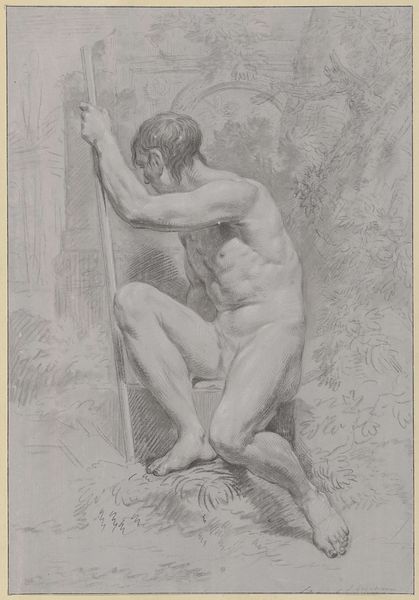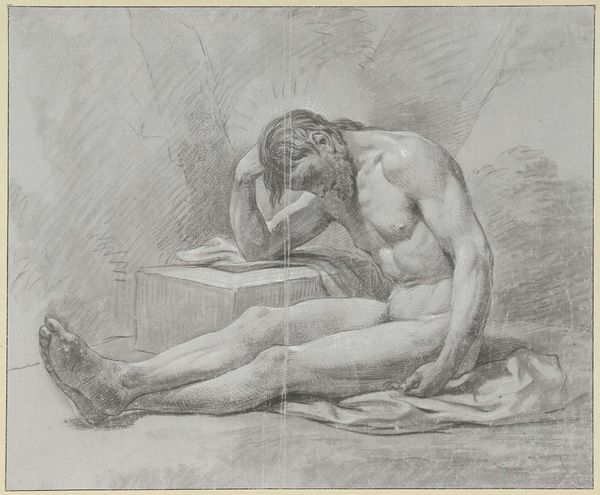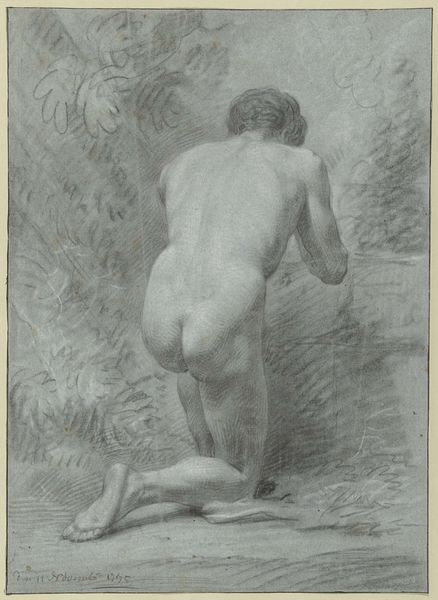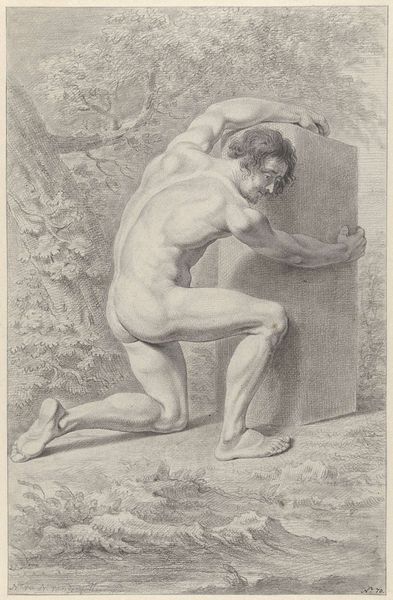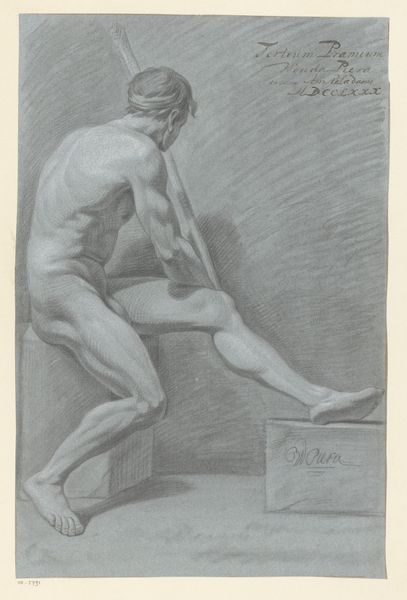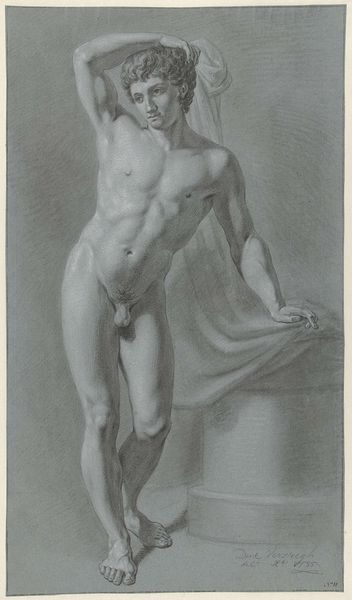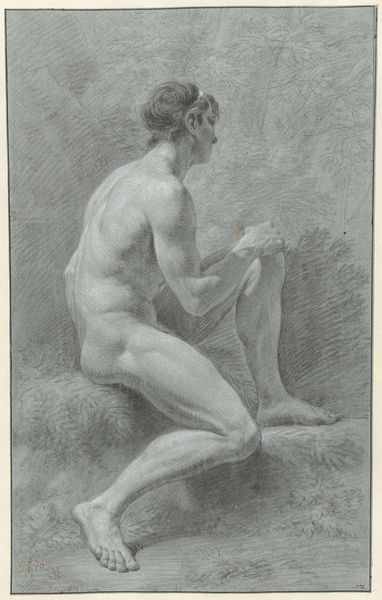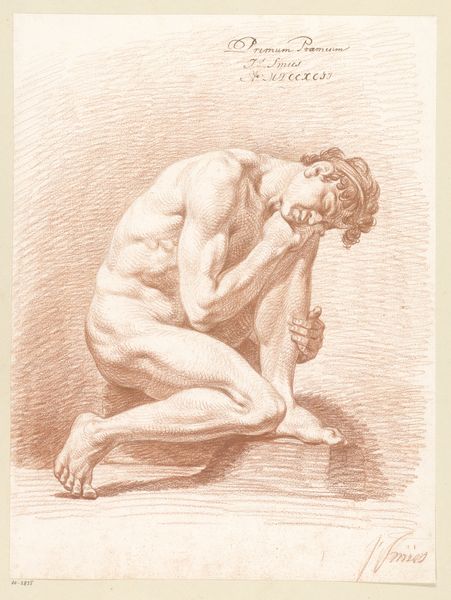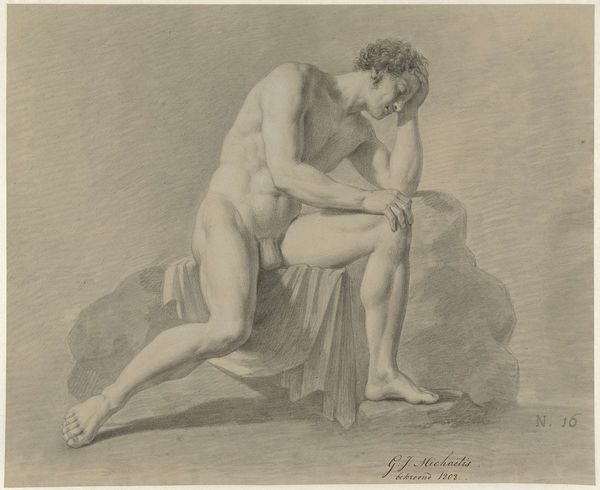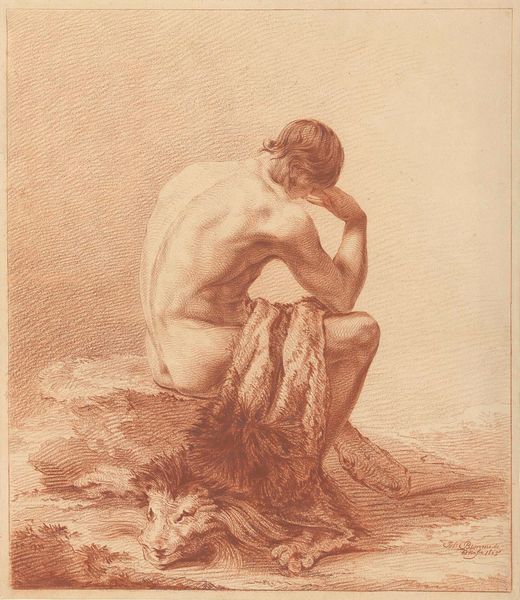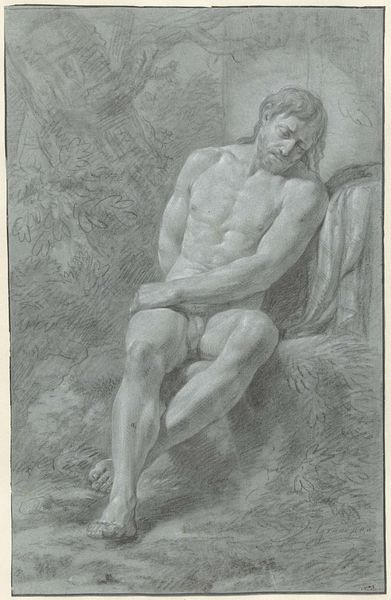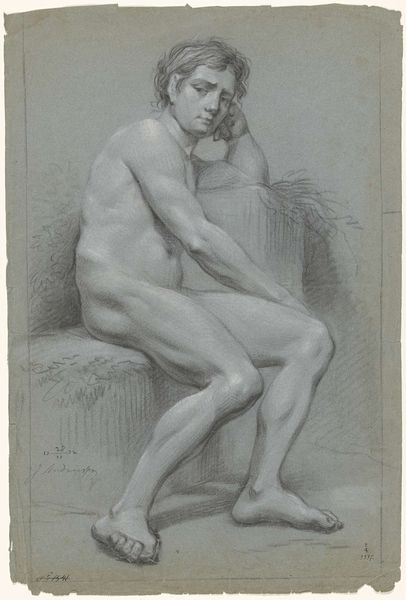
Dimensions: height 474 mm, width 307 mm
Copyright: Rijks Museum: Open Domain
Curator: Here we have a pencil drawing, possibly from 1776, by Jean Grandjean, titled "Seated Female Nude, Resting her Head in her Hand". Editor: My first impression is one of quiet desperation. The woman's pose, the way she’s hunched over with her head in her hands, it speaks volumes. There's a somber weight to the whole composition. Curator: Absolutely. Now, considering the period, the representation of the female nude, while seemingly classical, carried its own socio-political charge. These works were displayed in salons and academies that fostered a culture with strong views on feminine social roles. The viewer at the time would respond through a particularly gendered lens, judging if her nudity adheres to classicization and ideal beauty standards, which historically defined how femininity should be properly seen in the art space. Editor: It makes me wonder about the woman’s internal state beyond the imposed artistic ideals. What agency does she have within this portrayal? Is she melancholic, thoughtful, or burdened by societal constraints? The historical implications intersect with feminist viewpoints of enforced standards, forcing viewers now to analyze the work via discussions of empowerment versus historical patriarchal interpretation. Curator: A complex issue, indeed. The artist likely positioned this image as one that both participated in and departed from this social and political order by challenging those classical ideas. Grandjean, through rendering such detail, may have created the woman's physicality to reflect the influence of this time and space. Editor: Precisely. Considering this image alongside writings from philosophers or theorists from the era offers more texture to the artist's decision-making regarding pose and emotional resonance. How does she function within discourses surrounding female hysteria or emotional displays of weakness? Curator: Indeed. Bringing together theory and the history allows the artwork to live within these wider dialogues of power and representation. The artwork sparks discussion around those notions and, thus, it continues to engage viewers across time. Editor: Yes, approaching the art using an intersectional view is fundamental. The conversation offers contemporary interpretations and allows people to view her form, feeling, and pose as so much more than an aestheticized composition.
Comments
rijksmuseum about 2 years ago
⋮
In these studies Grandjean strictly followed the prevailing guidelines for drawing a model. For instance, he used black and white chalk on blue paper to achieve finer tonal nuances. And, he situated his models in an imaginary setting. With their athletic build and theatrical bearing, these two nude models resemble ancient sculptures.
Join the conversation
Join millions of artists and users on Artera today and experience the ultimate creative platform.
